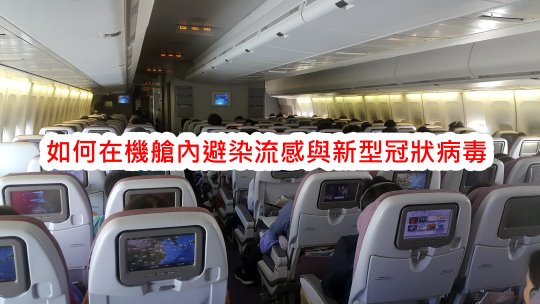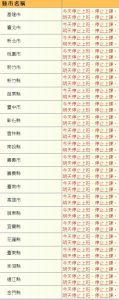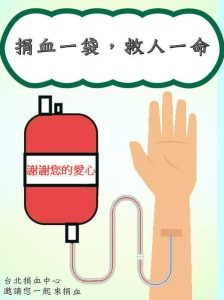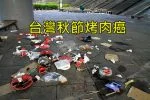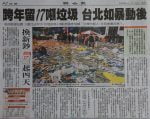新型冠狀病毒肺炎(Novel Coronavirus Pneumonia, NCP)正在蔓延,截至格林威治標準時間2020年2月9日06時止,全球有37,556個確診病例,其中6,196人嚴重,已死814人,康復2,769人。蔓延28個國家與地區,以原始發生地中國最為嚴重,確診數37,199,佔全球確診人數99%,其中2月8日一天就增加2,653例。
雖然很多國家或地區開始限制與中國大陸往來的航班,但不保證飛行其他路線的航班就安全,例如臺灣確診案例中,有3例是同一家人,父母親與兒子到義大利旅遊,疑似在香港轉機來回途中都染上新冠肺炎。這讓人擔心,沒進出中國大陸,只在機艙密閉空間就可能經由飛沫或接觸(如椅背、開口袋物品、扶手、安全帶扣、拖盤桌、廁所門把、廁所設施)而感染。
當大家關注突如其來的新冠狀病毒肺炎災情時,卻可能忽略了現在也是流感傳播的高峰期,而且來勢洶洶。美國疾病管制與預防中心估計在去年10月以來已經有1,900萬人患了流感,並有1萬人死亡。(The Centers for Disease Control and Prevention (CDC) estimates that there have been at least 19 million cases and 10,000 deaths from the flu in the U.S. alone this season.)
這段期間能避免在擁擠人潮處(如大型活動)或密閉空間(如大眾運輸系統、飛機)最好,若不得已,就要採取防護措施,戴醫藥用口罩與勤洗手是最基本的方法。
自然之母網站(MOTHER NATURE NETWORK, MNN)資深撰述兼編輯MARY JO DILONARDO撰文提出幾個在機艙裡避免感染流感與新型冠狀病毒(How to stay healthy on a plane right now)的建議,我翻譯成中文,供要搭飛機的人參考。
病菌傳播途經 How germs spread
知名醫藥網站Vellwell Health文章說,當一個病人打噴嚏或咳嗽時,具有傳染力的飛沫會從鼻子或嘴巴噴出。
如果有人對著你打噴嚏或咳嗽,不必經過直接碰觸,病菌就會進到你的眼睛、鼻子或嘴巴,讓你生病。
飛沫也可以降落到6英尺(約1.82公尺)遠的物體表面,並存活數小時。 如果有人觸摸該表面,就可能會生病。
這就是為什麼你在咳嗽或打噴嚏時應該用衣袖或衛生紙掩著,而不是用手掌, 這樣才能減少你傳播病菌的機會。
When a sick person sneezes or coughs, they spread droplets of fluid from their nose or mouth, reports Verywell Health. These droplets carry infections.
If someone sneezes or coughs right on you, the germs can enter your eyes, nose or mouth and make you sick. But you don’t have to experience direct contact.
The droplets can also land on a surface as far as six feet away where they can live for several hours. If someone touches that surface, they can become sick.
This is why you should always cough or sneeze into the crook of your elbow or into a tissue and not into your hand; there’s less chance of you spreading your germs to others that way.
保持清潔 Keeping clean
這些病菌持續多久取決於表面是否多孔以及液滴是否來自粘液或唾液。根據《國家地理》雜誌的報導,飛沫中的某些病毒只能持續數小時,而有些則可以持續數月。
飛機上旅客接觸最多的地方就是最髒的地方,例如托盤桌、安全帶扣、座椅靠背的開口袋、通風孔和洗手間。富比士雜誌說,許多表層在兩次飛行之間清潔整理時會被擦乾淨,但最好還是保持警覺。
坐到座位前,先用消毒濕巾清潔托盤桌、扶手、座椅安全帶和附近的其他物品。使用廁所後,要用肥皂和清水洗手。避免觸摸座椅靠背的開口袋或裡面的任何物品。
攜帶酒精類洗手液並在用餐前使用。 CDC建議以至少60%的酒精作為消毒液。即使已經擦拭過托盤桌,也不要直接從桌面拿東西吃。
在整個飛行途中,記得你的手千萬不要碰觸眼睛、臉部和嘴巴。
How long those germs last depend on whether the surfaces are porous or not and whether the droplets come from mucous or saliva. Some viruses in droplets only last for hours, while others can last for months, according to National Geographic.
The dirtiest spots on planes are the places travelers touch the most: tray tables, seatbelt buckles, seat back pockets, air vents and restrooms. Many of these surfaces get wiped down between flights, says Forbes, but it’s a good idea to be safe.
When you get to your seat, use disinfectant wipes to clean the tray table, the armrest, seat buckle and anything else nearby. Wash your hands with soap and water after using the restroom. Avoid touching the seatback pocket or anything inside it.
Carry alcohol-based hand sanitizer and use it before you eat. The CDC recommends sanitizer that’s at least 60% alcohol. Don’t eat anything directly off the tray table, even if you’ve wiped it down first.
During the entire flight — and always, really — keep your hands away from your eyes, face and mouth.
其他秘訣 Other plane tips
您還可以採取其他措施來降低染病的機率。
There are other steps you can take while flying to lower your chances of getting sick.
選擇靠窗的座位 Choose a window seat
若你坐在窗邊,很可能較少起身和走動,這會減少接觸其他的乘客。 發表在《美國國家科學院院刊》(PNAS)的研究發現,坐在窗邊的人也更安全,因為他們離走道較遠,而走道會有更多潛在攜帶病菌的人來回走動。
When you sit near the window, you’re less likely to get up and move around, which means you’ll come in contact with fewer passengers. Research published in the journal Proceedings of the National Academy of Sciences (PNAS).found that people sitting by the window are also safer because they’re farther away from the aisle, which is where more potentially germy people go back and forth.
打開空調孔 Open the air vent
打開你座位上的空調孔,設置在低或中風量的位置,可在你周圍形成氣流屏障以防禦病菌。 周圍的氣流有助於阻止空氣傳播的病毒進到你體內,並吹得它們更快掉到地面,這樣就可減少吸入病菌。
Set your individual air vent on low or medium to help create a barrier around you to ward off germs. The air flow around you helps block airborne viruses from reaching you and forces them to fall to the ground more quickly. That means there are fewer germs to breathe in.
不用毯子 Skip the blanket
空調孔吹出來的氣流可能讓你覺得冷,但慎重考慮是否要向空服員要求一條保暖的毯子(也許航空公司甚至已經提供了一條毯子)。 除非你的枕頭或毯子是用塑膠袋包裝的,否則這毯子有可能在先前已被別人使用過。《華爾街日報》 2007年的一項研究發現,航空公司平均每5到30天才清洗一次毯子,不過現在大多數航空公司已經改變這樣的做法了。
That extra air might make it chilly, but reconsider asking for a blanket (assuming your carrier even offers one). Unless your pillow or blanket is wrapped in plastic, there’s a chance it was used by someone else before you. Hopefully, most airlines have changed this policy by now, but a 2007 study by the Wall Street Journal found that carriers clean their blankets on average every five to 30 days.
考慮配戴口罩 Consider a mask
在冠狀病毒爆發期間,現在有很多關於口罩保護功效的爭論。CDC已發布有關兩種主要口罩類型(外科口罩和N95口罩)的指南。 外科口罩在藥店有售,可在網上購買,並在醫療機構中使用,它們可以防止大的沫滴和液體,但不能防止空氣中的微粒。N95口罩則可提供更多的保護。
戴口罩的主要問題是,人們會在口罩內擦鼻子,或翻開口罩講電話,或是重複使用一次性的口罩。
There’s a lot of debate right now during the coronavirus outbreak about the effectiveness of face masks for protection. The CDC has issued guidelines on the two primary types of face masks: surgical masks and respirator (N95) masks. Surgical masks are found at pharmacies and sold online and are worn in health care settings. They protect against large droplets and fluids, but not against airborne particles. Respirator masks offer much more protection.
A major problem with wearing masks is that people will rub their noses underneath them, lift them to talk on the phone or reuse masks meant to be used just once.
避免接近生病的人 Avoid sick people
如果有人在你周圍打噴嚏或咳嗽,請詢問空服人員是否可以讓你更換到更遠的座位。先前的PNAS研究發現,相隔兩個座位或前後座有呼吸道疾病的人,則該乘客也會生病的機率高達80%以上。
If someone is sneezing or coughing around you, ask a flight attendant if you can switch seats to move farther away. The earlier PNAS study found that passengers within two seats or a row of someone with a respiratory illness have an 80% or greater possibility of getting sick too.
 資料取自:https://www.worldometers.info/coronavirus/
資料取自:https://www.worldometers.info/coronavirus/
延伸閱讀:
世界衛生組織告訴你大蒜、漱口水、芝麻油是否有助於防疫(中英對照)
With Growing Fears About The Coronavirus, Best Ways To Stay Healthy When Flying


